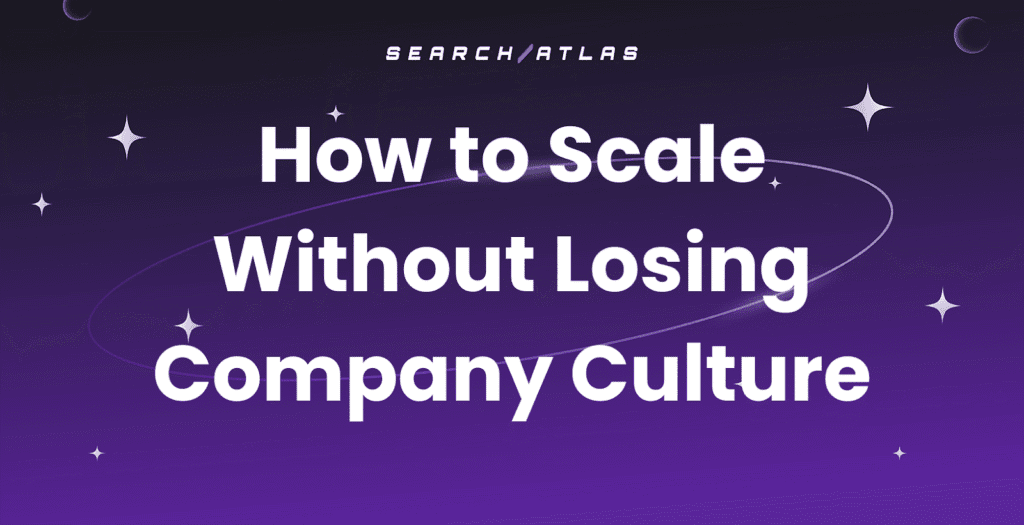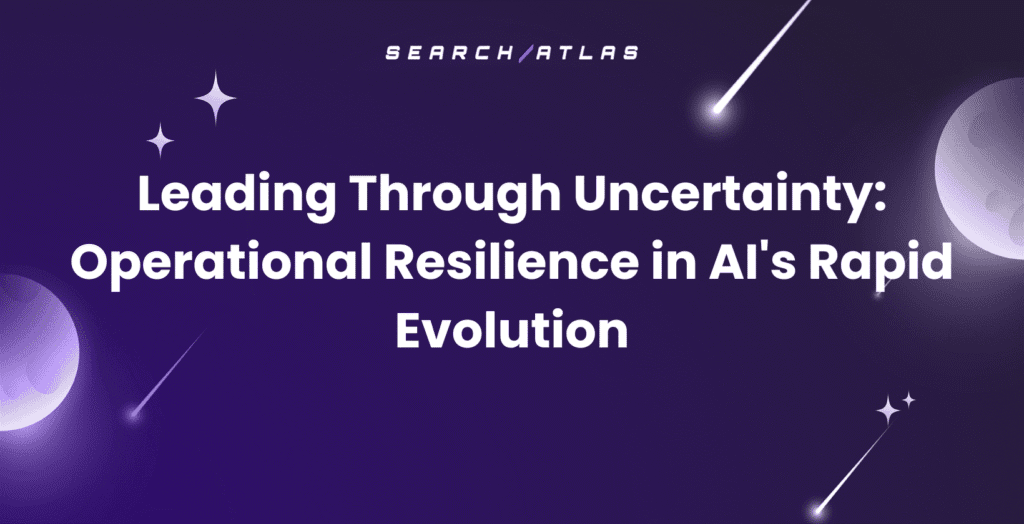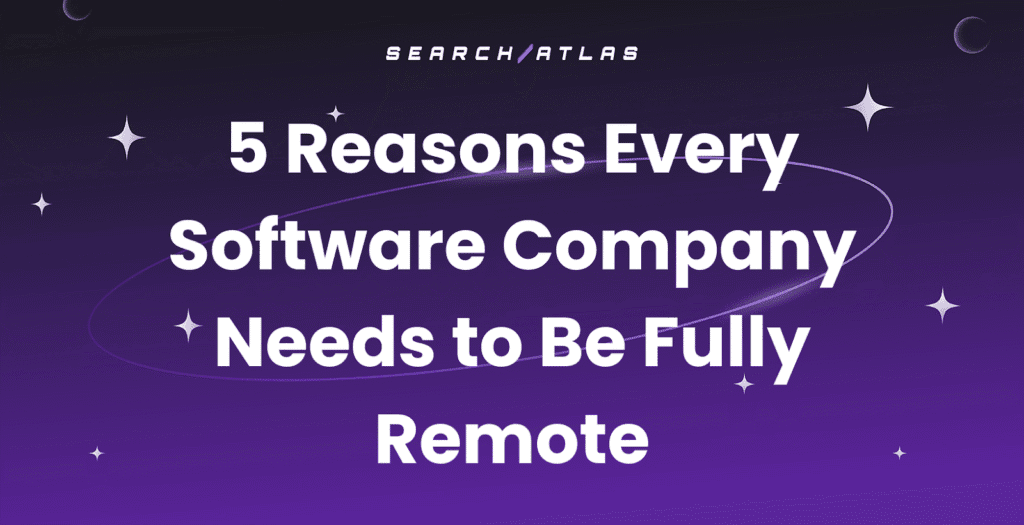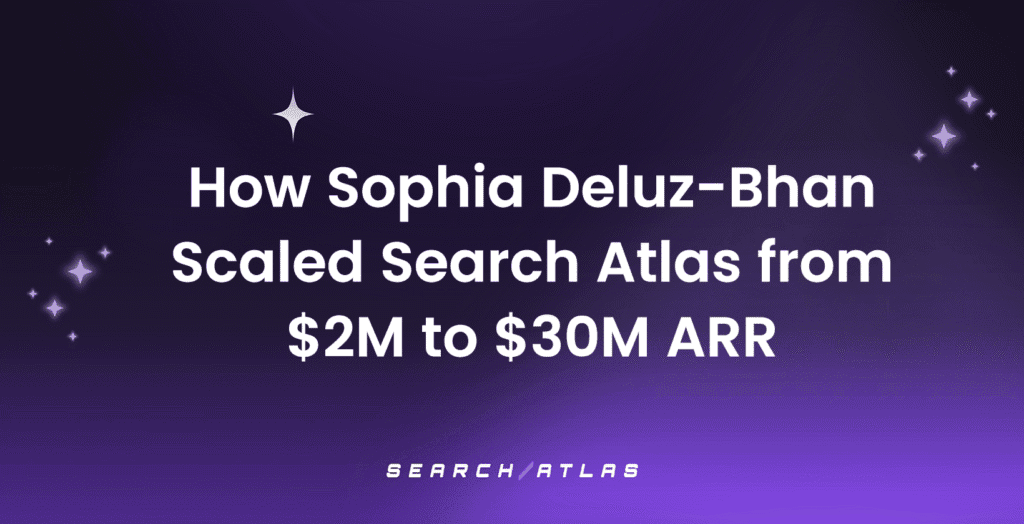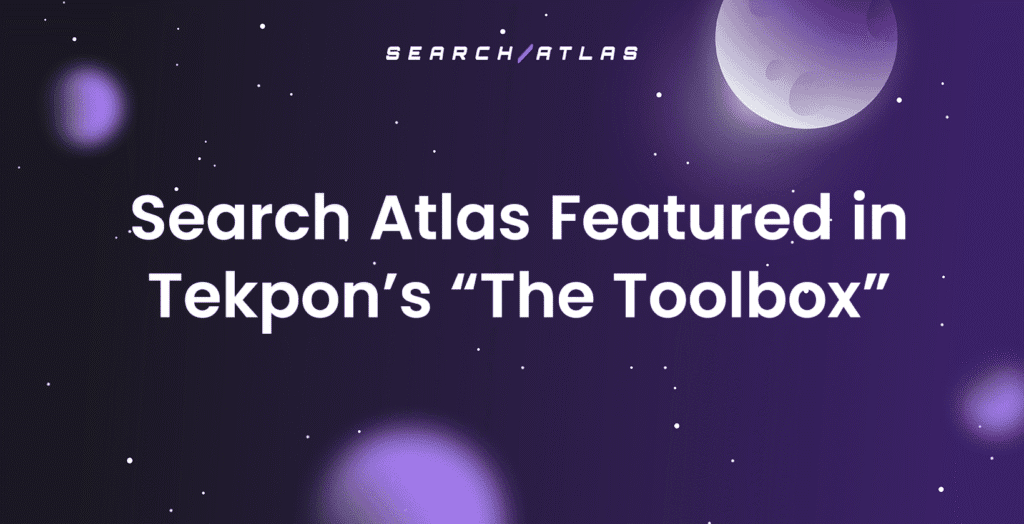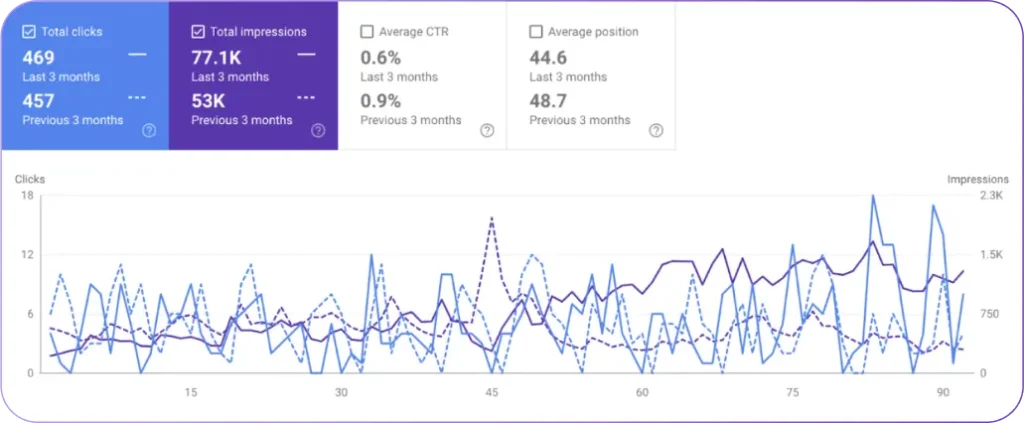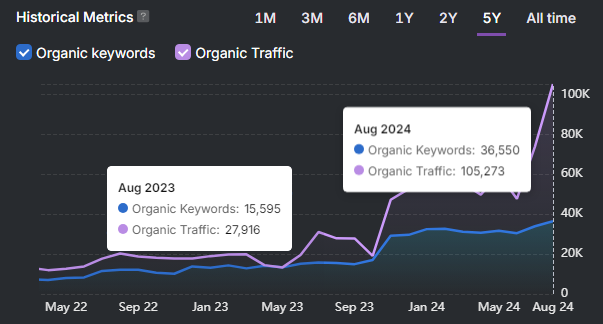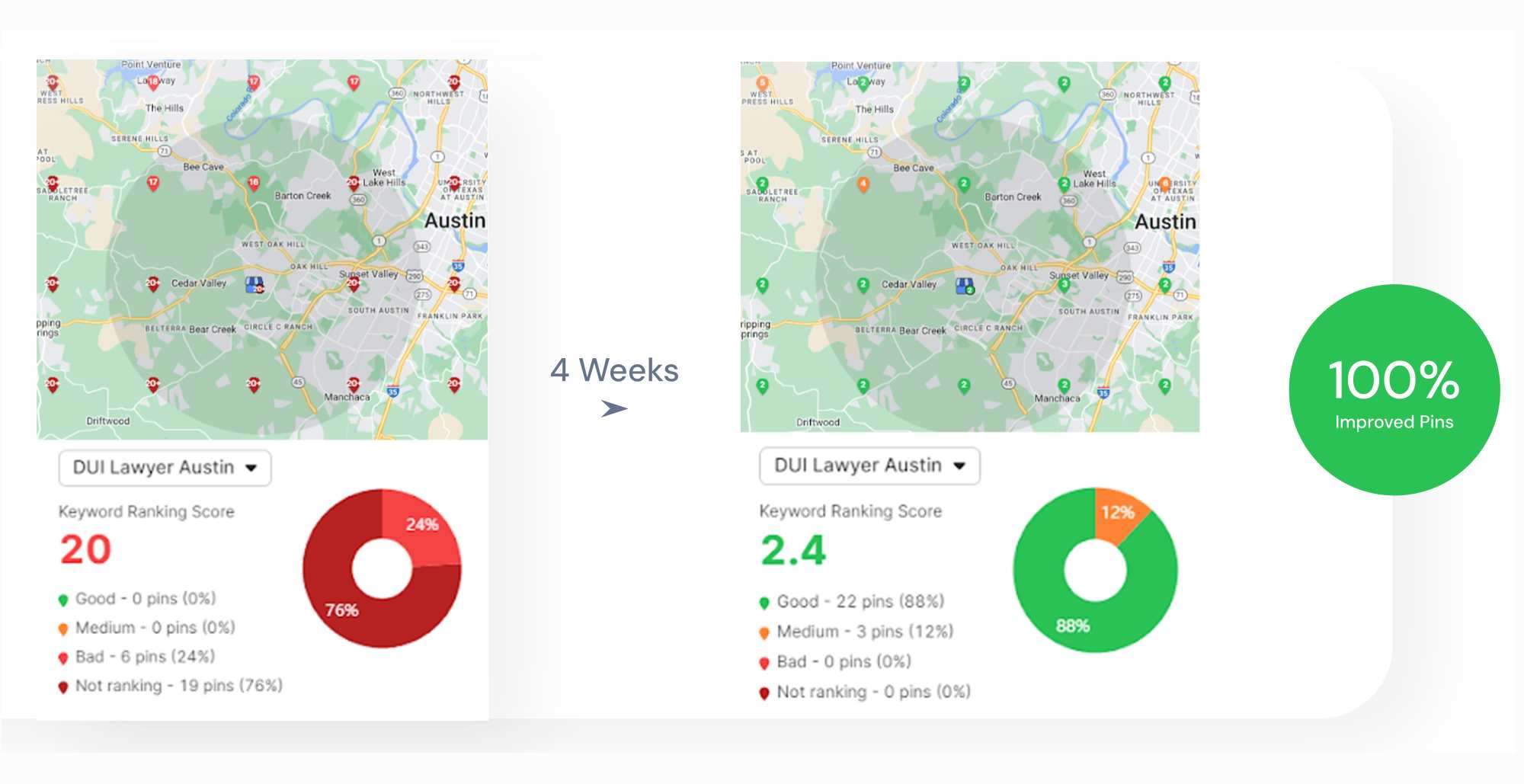Marketing is entering a new phase defined by artificial intelligence (AI) that acts, decides, and executes independently. Vibe Marketing captures this transformation, introducing an era where AI manages marketing execution while humans lead creativity, strategy, and relationships.
Within this new model, Vibe SEO forms the search-focused layer of Vibe Marketing. It is the practice of executing SEO through artificial intelligence using a conversational interface or AI agent. Marketers request reports, audits, and content updates through natural dialogue, and the system performs them instantly.
Agentic AI extends this idea further by introducing full autonomy. It describes systems capable of making contextual decisions, executing tasks independently, and optimizing performance without step-by-step instruction. This level of intelligence transforms how marketing campaigns are built, managed, and scaled.
Search Atlas applied this philosophy first in SEO and GEO through OTTO Agent and OTTO SEO. OTTO Agent is the world’s first AI SEO agent built for Vibe SEO that enables marketers to execute SEO strategies directly through conversation. OTTO SEO delivers full AI automation, scanning sites, diagnosing issues, and applying optimizations autonomously.
Vibe Marketing defines the future of marketing: intuitive, conversational, and agentic. Marketing is no longer automated. It is autonomous.
Vibe Marketing: A New Creative Infrastructure
Vibe Marketing redefines how marketing operates. It merges human creativity with artificial intelligence that executes work across channels through a conversational interface or agent. Campaigns are built once and then evolve continuously, adjusting to audience reactions, engagement trends, and performance signals without constant manual input.
A marketer defines goals, tone, and creative direction. The system then interprets this guidance, automating delivery across email, ads, content, and social media.It tests ideas, measures sentiment, and adjusts content continuously.
Each channel learns from results and fine-tunes its own messaging and targeting to stay aligned with audience emotion and intent. Marketers focus on storytelling and strategy while the AI executes, optimizes, and learns in the background.
Vibe SEO: From Conversation to Execution
Vibe SEO is the search-focused layer of Vibe Marketing. It is the practice of executing SEO through AI using a conversational interface or AI agent. While Vibe Marketing manages the entire customer journey across channels, Vibe SEO focuses on discovery and visibility within organic search.
In practice, Vibe SEO functions as an adaptive optimization system. It improves rankings, enhances content quality, and strengthens authority in search engines. The AI audits websites, rewrites pages, and applies technical updates automatically. Each adjustment is based on verified search data, creating a cycle of continuous improvement and learning.
This capability becomes real through OTTO Agent, the first AI SEO agent for Vibe SEO, built inside Search Atlas. OTTO performs audits, fixes issues, and restructures pages through natural interaction. Marketers define objectives, and OTTO executes them in real time, translating creative direction into SEO growth.
Agentic AI: Execution That Thinks
Agentic AI powers the intelligence that makes Vibe Marketing and Vibe SEO possible. It moves beyond predefined rules and automations, introducing systems that act with autonomy, interpret goals, and make decisions in context. Instead of waiting for instructions, these systems evaluate performance data, detect opportunities, and take action instantly.
In Vibe Marketing, Agentic AI manages the moving parts of campaigns across channels. It monitors engagement signals, adjusts targeting, and refines creative delivery based on live results. Each optimization happens in real time, guided by data rather than manual scheduling.
In Vibe SEO, Agentic SEO like OTTO SEO functions as the decision layer behind continuous optimization. It scans site structure, compares performance against search trends, and applies updates automatically. Page improvements, metadata changes, and content rewrites occur dynamically as the system learns from results.
“We’re seeing agencies cut their implementation time from weeks to hours using our current tools,” says Manick Bhan, founder and CTO of Search Atlas.
The Effort-Creativity Matrix: Where AI Creates Real Value
Every marketing activity involves two factors: the effort it takes and the creativity it demands. Mapping these factors reveals four clear zones that show where agentic AI delivers the real value and practical impact.
1. High Effort, Low Creativity — Agentic Automation Zone
This category includes repetitive and time-consuming work such as performance reporting, data aggregation, campaign scheduling, and list segmentation. They demand accuracy and repetition rather than imagination or emotional interpretation, which limits their creative return.
They are ideal for agentic AI automation, where systems like OTTO SEO execute actions independently, processing inputs, updating data, and optimizing performance at scale.
“Once repetitive work moves to AI, creative thinking and strategy take center stage”. Says Bhan.
Delegating operational work to AI shortens production cycles and transforms static workflows into adaptive systems. Campaigns remain active and optimized even when teams are offline.
2. High Effort, High Creativity — Strategic Intelligence Zone
This category includes brand-defining projects such as product launches, integrated campaigns, and repositioning initiatives. These efforts demand both creativity and deep analytical insight. Here, AI strengthens strategy instead of replacing it.
“Vibe Marketing will never replace your brain, but it will save you time, make you more efficient, and help you deploy and build quicker while iterating faster,” says Bhan.
Agentic systems accelerate research, competitive analysis, and performance modeling, which give marketers more time to focus on narrative, emotion, and brand meaning.
3. Low Effort, High Creativity — Human Expression Zone
This zone represents where human creativity thrives. It includes writing, design, and storytelling, the type of work that depends on intuition, empathy, and emotional intelligence. These actions demand qualities that no algorithm can fully replicate.
Agentics AI functions as a creative partner rather than a replacement. It assists marketers by enhancing ideation, provides instant feedback, and refines content for clarity, structure, and relevance. The human sets the vision, and the AI ensures each idea reaches its full potential.
Inside Search Atlas, the Content Genius and SCHOLAR scoring system demonstrate how human expression and AI precision can coexist. Marketers and writers create the message, while the system evaluates readability, structure, and semantic depth based on how search engines and large language models interpret meaning.
The result is faster iteration, higher quality, and creativity that stays authentic while scaling effectively. Agentic AI gives human expression endurance and precision, expanding what creativity can achieve.
4. Low Effort, Low Creativity — Full Automation Zone
Routine administrative work such as moderation, updates, and report compilation, offers little strategic or creative return. These tasks that deliver minimal strategic or creative value and are ideal for full automation.
Assigning them to agentic AI eliminates operational friction, reduces human error and ensures precision at scale. Agentic systems track performance data, update information, and manage background operations independently, allowing marketing teams to focus on high-impact analysis, innovation, and creative experimentation.
The Rise of Agentic AI in Marketing
Agentic AI has moved from theory to implementation. These systems now plan, execute, and optimize campaigns without direct human supervision. What was once automation has evolved into autonomous decision-making powered by continuous learning.
“Marketing is shifting from AI assistance to full autonomy. Intelligent agents no longer wait for instructions. They detect patterns, act independently, and improve with every cycle.” explains Manick Bhan, founder and CTO of Search Atlas.
Adoption is accelerating across industries. Recent data underscores the scale of this shift:
- 45 % of Fortune 500 companies are piloting agentic AI systems in 2025.
- Retail traffic from AI-powered chatbots increased 1,950% year over year during the 2024 holiday season.
- Organizations using agentic systems report an 86% reduction in human task time across multi-step workflows.
- The market is projected to grow from 5.2 billion dollars in 2024 to 196.6 billion dollars by 2034.
Agentic AI marks the turning point where intelligence begins to lead execution and marketing becomes truly self-operating.
What Makes Agentic Marketing Different?
Traditional marketing automation follows instructions. It waits for inputs, executes predefined steps, and delivers predictable outcomes. The process is efficient but rigid.
Agentic Marketing changes that logic entirely. It introduces systems that interpret data, make decisions, and act independently, closing the gap between insight and execution.
1. Autonomy and Independent Intelligence
Agentic AI reads live data from analytics platforms, CRMs, and ad dashboards to identify emerging opportunities and potential risks. It detects performance drops, reallocates budgets, and adjusts campaign timing on its own.
In practice, this means campaigns stay active and responsive even when teams are offline. Agents act without waiting for manual updates or scheduled inputs, creating a continuous cycle of testing, refinement, and improvement.
“We are moving from tools that respond to commands to intelligent systems that detect opportunities and execute strategies independently,” observes Bhan.
2. Adaptive Learning
Every outcome becomes new training data. Each click, impression, and engagement teaches the system more about audience behavior. The longer these systems run, the smarter their decisions become.
Instead of static weekly reports, teams receive real-time insights drawn from thousands of micro-decisions executed daily. This constant feedback loop accelerates optimization and ensures that campaigns evolve with audience interests, not behind them.
3. Connected Intelligence
Agentic Marketing unifies what used to be separate operations. One ecosystem can now research competitors, produce content, manage outreach, and analyze conversions at once. Research, execution, and reporting flow through a single feedback channel, where each stage informs the next automatically.
This connectivity removes fragmentation and creates momentum. Campaigns operate as cohesive systems rather than a collection of tools, which ensures that every action reinforces the next.
4. Human Strategy at the Core
Autonomous systems do not replace human intelligence. They extend it. As agentic execution manages workflows, marketers return to strategy, storytelling, and creative direction.
The human defines the vision, and the system carries it forward with precision. Marketers evolve from task operators into strategic leaders guiding intelligent systems that never stop improving. Creativity remains the driver, and AI becomes the engine that keeps it in motion.
Practical Applications of Vibe Marketing
Agentic AI turns marketing into an adaptive and continuous process. Every activity, from content creation to audience research, moves from manual execution to intelligent automation that acts on data in real time.
- Content Intelligence and Creation: Use AI to identify trending topics, interpret audience intent, and generate optimized drafts automatically. Marketers refine tone, while the system manages formatting, scheduling, and delivery across platforms.
- Real-Time Campaign Optimization: Automate campaign performance across all channels. The system tests variations, reallocates budgets, and adjusts creative elements continuously, ensuring campaigns evolve based on live audience behavior.
- Audience and Sentiment Intelligence: Apply AI to unify reviews, queries, and behavioral data into a single audience model. Detect sentiment shifts, identify loyalty triggers, and deliver refined messaging or personalized offers in response.
- Market and Competitive Intelligence: Use agentic research to track competitor strategies, backlink growth, and campaign performance across the web. Identify opportunity gaps and emerging trends before competitors respond, ensuring decisions remain proactive and data-driven.
How to Adopt the Vibe Marketing Model
Vibe Marketing succeeds through iteration, not overhaul. The transition begins with focused automation, expands through new role definitions, and matures into an adaptive culture driven by continuous learning.
1. Start Small, Scale Fast
Begin with a few repetitive, high-effort tasks such as reporting, scheduling, or keyword mapping. Assign these to AI agents and measure time savings, accuracy, and output quality. Once reliability is proven, expand automation step by step until efficiency compounds across workflows.
2. Redefine Roles, Not Teams
The Vibe approach elevates human expertise instead of replacing it. Marketers evolve from executors to strategic directors who guide AI systems. Effort shifts from managing tools to shaping insights, turning every marketer into a strategist supported by intelligent automation.
3. Preserve the Human Layer
Agentic systems excel at precision, but empathy and trust remain uniquely human. Creative judgment, brand tone, and relationship building require authenticity that algorithms cannot produce. Human oversight ensures automation enhances credibility rather than diluting it.
As Manick Bhan emphasizes, “The agentic shift isn’t about removing people from marketing. It’s about removing the friction that slows them down. The faster teams learn to collaborate with their agents, the more human their marketing becomes.”
4. Build a Culture of Experimentation
Agentic intelligence improves through feedback. The more it interacts with data, the faster it learns. Organizations that embrace continuous testing and refinement gain compounding performance advantages. Each iteration improves predictions, reduces waste, and sharpens creative direction.
The Competitive Imperative
Adoption of Agentic AI in marketing is accelerating across industries as brands realize that intelligent systems outperform traditional automation in both scale and precision. The momentum is measurable:
- 82% of organizations plan to integrate AI agents into their operations by 2026.
- 88% of companies already using agentic AI report a positive return on investment.
- Organizations deploying agentic systems experience up to 4,700% growth in qualified traffic.
- AI-driven teams complete tasks 12x more complex than those relying on traditional automation.
The competitive window is closing quickly. In 2027, agentic marketing will no longer signal innovation, it will be the standard operating mode. Companies that act now will define the standards others follow.
Build the Future of Marketing Through Agentic Execution
A new marketing era is emerging. Vibe Marketing is redefining what it means to be a marketer. The future belongs to marketers who unite human creativity with machine precision. Those who combine strategic insight, emotional understanding, and adaptive technology will set the pace for the next decade of growth.
“We’re not building AI to replace marketers, we’re building AI to free marketers from everything that isn’t marketing. That’s the promise of agentic marketing, and that’s exactly what OTTO SEO delivers.” explains Manick Bhan, founder and CTO of Search Atlas
Shape the marketing future today. Experience the Agentic AI era in action for free!


